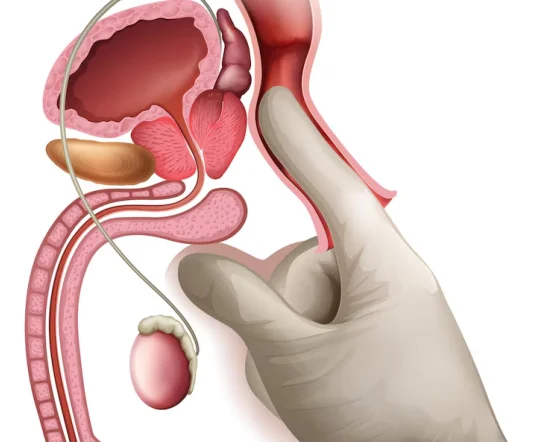Epilepsy is a chronic neurological disorder marked by recurrent seizures. These seizures result from sudden bursts of electrical activity in the brain, which can affect behavior, sensation, movement, or consciousness. Accurate and early diagnosis of epilepsy is essential, as it helps tailor effective treatment and improves the patient’s quality of life.
Understanding the diagnostic process is critical not just for patients, but also for caregivers and family members. A timely and precise diagnosis of epilepsy lays the foundation for successful treatment, better seizure control, and an improved quality of life. It also helps avoid misdiagnosis, which could lead to unnecessary medications or delayed care. Fortunately, modern neurology offers a wide array of advanced tools, such as EEG (electroencephalogram) and MRI scans, that allow neurologists to pinpoint the type, location, and possible cause of seizures with increasing accuracy.
What is Epilepsy?
Epilepsy is not a single disease but a spectrum of neurological disorders characterized by unprovoked, repeated seizures. A person is generally diagnosed with epilepsy after experiencing two or more unprovoked seizures at least 24 hours apart.
The symptoms of epilepsy vary depending on the type of seizure and the area of the brain affected. Some seizures involve full-body convulsions, while others may be as subtle as brief lapses in awareness or twitching of a limb. Common symptoms that may prompt an evaluation for epilepsy include :-
-
Loss of consciousness or awareness
-
Staring spells
-
Uncontrolled muscle movements
-
Temporary confusion
-
Sudden fear, anxiety, or déjà vu sensations
Recognizing these symptoms early and seeking medical help is the first step in getting a proper diagnosis.
When to Seek Medical Evaluation?
A single seizure does not always mean a person has epilepsy. However, if someone experiences unexplained or recurrent seizures, a comprehensive neurological evaluation is necessary. Other conditions, such as fainting, migraines, or panic attacks, can sometimes mimic seizures. That’s why diagnosing epilepsy requires a detailed process involving clinical history, physical examination, and several diagnostic tests.
Prompt diagnosis is crucial, as untreated epilepsy can result in injury, loss of consciousness, or even life-threatening complications like status epilepticus.
Medical History and Clinical Evaluation
The diagnosis of epilepsy typically begins with a thorough medical history. The doctor will ask detailed questions about the seizures :-
-
What happens before, during, and after the episode?
-
How long do the episodes last?
-
Are there any known triggers?
-
Is there a family history of epilepsy or neurological conditions?
Eyewitness accounts from family members or friends who have observed the seizures are also valuable in helping doctors understand the nature of the episodes.
A physical and neurological exam follows the clinical history. This may include evaluating reflexes, muscle strength, coordination, balance, and mental function. Any abnormality detected during this evaluation can help pinpoint the affected area of the brain.
Diagnosis of Epilepsy
Several tests help confirm a diagnosis of epilepsy and identify the type and source of seizures. These include :-
- Electroencephalogram (EEG)
An EEG is the most important test used to diagnose epilepsy. It measures the electrical activity of the brain through electrodes placed on the scalp. During an EEG, doctors look for unusual brain wave patterns or spikes that indicate seizure activity.
Sometimes, a routine EEG may not capture abnormal activity, especially if seizures are infrequent. In such cases, prolonged or ambulatory EEG monitoring may be recommended, where the recording continues for 24 hours or more.
- Magnetic Resonance Imaging (MRI)
MRI scans provide high-resolution images of the brain and are useful in detecting structural abnormalities such as tumors, scar tissue, or developmental conditions that could cause seizures. An epilepsy protocol MRI is a more specialized scan designed to detect subtle abnormalities often missed in standard scans.
- CT Scan
While less detailed than MRI, a CT scan may be used in emergency settings to rule out causes like bleeding, stroke, or trauma that might trigger a seizure.
- Blood Tests
Blood tests help rule out metabolic or genetic conditions that can cause seizures. These tests can check for infections, blood sugar levels, electrolyte imbalances, or autoimmune disorders.
Advanced Tests for Complex Cases
In some cases where standard tests do not provide enough information, more advanced testing may be needed :-
-
Video EEG Monitoring :- Combines video recording with EEG over several days in a hospital setting. This helps capture actual seizures to determine their type and origin in the brain.
-
Positron Emission Tomography (PET) and Single Photon Emission Computed Tomography (SPECT) :- These imaging techniques show how the brain functions and help locate seizure foci when MRI results are inconclusive.
-
Neuropsychological Testing :- Assesses cognitive functions like memory, attention, and language to understand how seizures impact brain performance and to help locate affected areas.
Differential Diagnosis: Ruling Out Other Conditions
Because many disorders can mimic seizures, doctors often perform a differential diagnosis. Conditions such as syncope (fainting), heart arrhythmias, migraines, sleep disorders, and psychogenic non-epileptic seizures (PNES) must be considered.
A correct diagnosis ensures that treatment is not only effective but also avoids unnecessary medications or procedures. This is particularly important in children, where symptoms can be subtle or confused with behavioral issues.
The Importance of Early and Accurate Diagnosis
The earlier epilepsy is diagnosed, the sooner treatment can begin. Many people with epilepsy respond well to anti-seizure medications. Some may be candidates for surgery, neurostimulation devices, or dietary therapy depending on the type of epilepsy.
Accurate diagnosis also helps patients and caregivers understand what to expect, manage lifestyle changes, and minimize seizure risks. It can significantly reduce the impact of epilepsy on education, employment, and social life.
Living With Epilepsy After Diagnosis
Receiving an epilepsy diagnosis can be overwhelming, but with the right medical support, most people can lead full, active lives. It’s essential to :-
-
Follow the prescribed treatment plan
-
Avoid seizure triggers
-
Get enough rest and manage stress
-
Wear medical identification
-
Inform family, teachers, or coworkers about the condition and what to do during a seizure
Regular follow-ups with a neurologist help monitor the effectiveness of treatment and adjust medications if necessary.
Conclusion
Diagnosing epilepsy involves a careful combination of clinical evaluation, neurological testing, and imaging. While the process can be complex, early detection and appropriate care can lead to better long-term outcomes.























